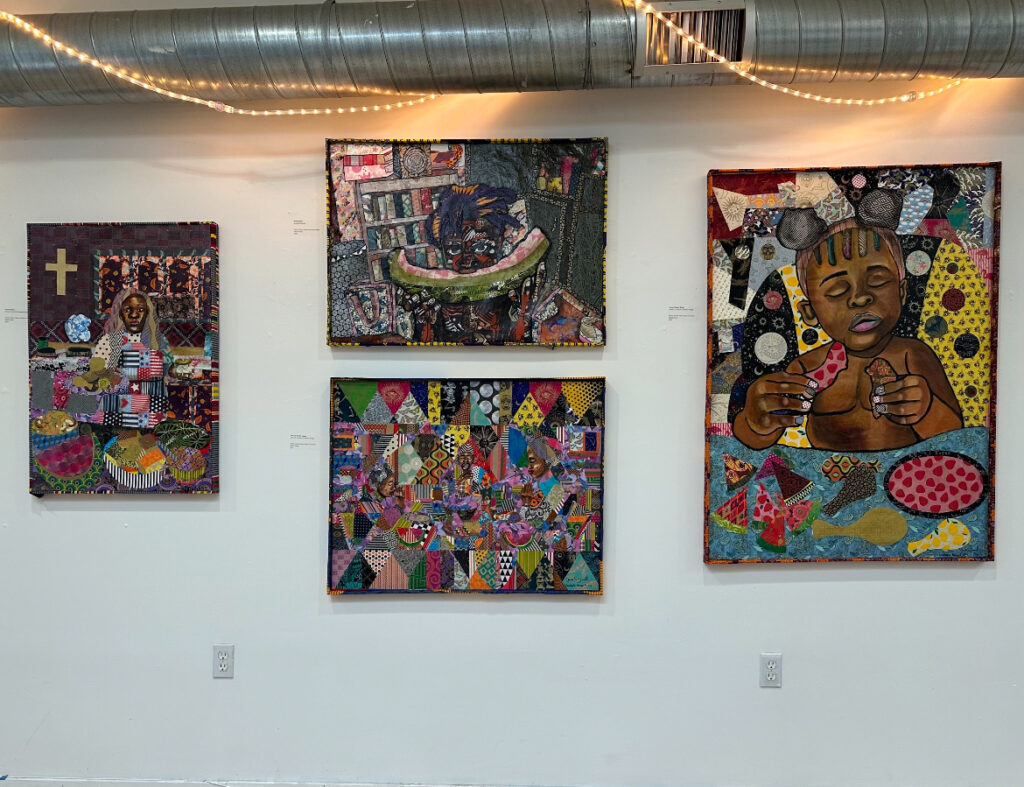Through an unassuming embrace of an alleyway, a modest sign titled, “Work by James S. Terrell & Zsudyka Nzinga” was placed in the narrow passageway to guide onlookers to a realm where Black culture and canvas meet.
On Saturday, Dec. 2, James Terrell, a 1999 graduate of Howard University, and his wife, Zsudayka Nzinga, invited audiences to their latest exhibition at the Art of Nioze Gallery located in the Petworth area of Washington, D.C.
“Watermelon, Chicken & Cornbread” explores the threads of cultural narratives and culinary traditions embedded within the African-American community.
The showcase thoroughly examines the diverse relational history behind staple foods of the African-American community and challenges the external stigmatization that has been placed on them.
“We have a history, and not only just Black people, but people, in general, have a history of taking the scraps and taking what people don’t want and making gold out of it, and I wanted to show people that you could make gold out of the things that people look down upon,” Adrian Ferguson, the owner and Chief Curator of the Art of Nioze Gallery, said.
Ferguson described this exhibition as a deliberate effort to challenge stereotypes, evoke feelings of familiarity and comfort, and, most importantly, reclaim the cultural significance embedded in the culinary history explored by Terrell and Nzinga.

“I think there’s a negative stereotype around the food watermelon, chicken, and cornbread, but it has a rich history in our community, and I really wanted to change the narrative behind these iconic foods that we all know and love, not even just Black people but all people,” Ferguson said.
Ferguson highlighted these negative stereotypes, emphasized the need to alter these perceptions and shed light on these foods’ rich cultural significance.
“Everybody I know eats watermelon and chicken and cornbread, but somehow it’s negative when it comes to Black people, so I wanted to portray it in a different light, and I wanted that art in here that portrays these things, these three food groups in a different light to change the narrative for us,” Ferguson said.
Greta Chapin-McGill, a local artist represented by the gallery, shared her admiration for the technical proficiency displayed in the exhibition.
“It’s a specific genre that’s very popular now, and it’s done very well here. I do my own work a lot with collage and a lot with found objects. I like the way that they have carried the patterns all the way out into the framing, which is very different,” she said.
Chapin-McGill also emphasized the profound significance of the exhibition’s messaging, “The subject matter is really quite indicative of our people, and I feel that it’s something that we as a whole need to embrace. The fact that we do have this rich history of Sunday dinners and family and tradition, and I think these pieces speak to that. I think it’s an amazing exhibition.”
As the resonance of “Watermelon, Chicken & Cornbread” continues to dawn the gallery walls, it becomes clear that this exhibition is not only a celebration of artistic mastery but also an invitation to reflect on the narratives that have shaped the culinary identity of a community.
Copy edited by Jasper Smith









